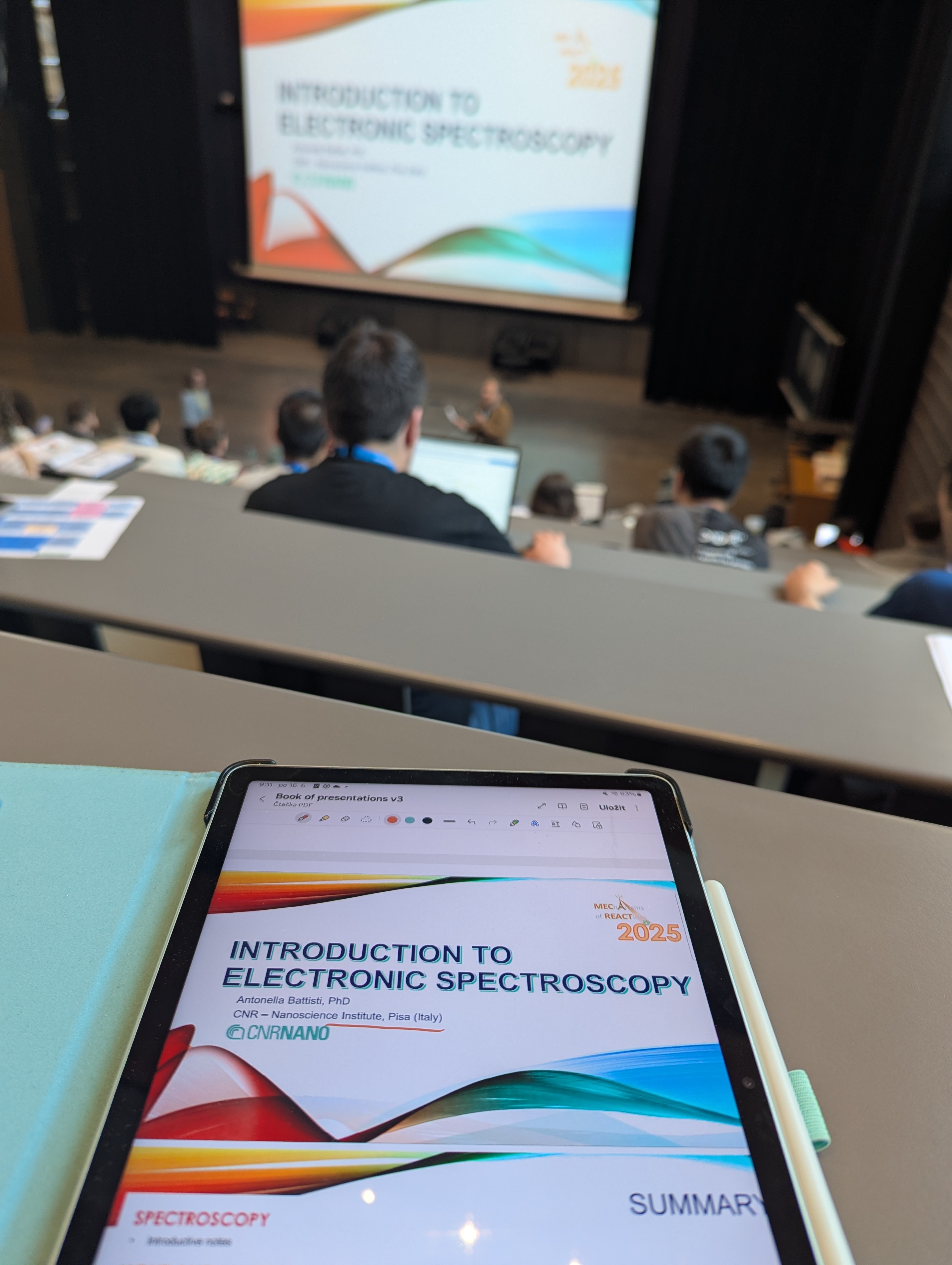The event was held under the auspices of the French National Centre for Scientific Research (CNRS) and was scientifically led by Dr. Josefine Schnee and Dr. Alberto Mezzetti from Sorbonne University.
The summer school was intended for PhD students, postdoctoral researchers, scientists, as well as engineers and technical staff working in the fields of catalysis, photochemistry, biochemistry, and materials research. Its goal was to establish a common framework for various scientific communities that use spectroscopic techniques to investigate reaction mechanisms. The program covered a wide range of techniques, including infrared (IR), Raman, resonance Raman, UV-Vis, fluorescence, and synchrotron spectroscopy. Through lectures and practical sessions, participants became familiar with the capabilities of these methods, principles of appropriate experimental design, and tools for data processing and spectral interpretation. Particular emphasis was placed on synergistic approaches that combine multiple spectroscopic techniques to achieve a deeper understanding of the studied processes.

The scientific program featured lectures by leading experts from across Europe – such as Prof. Thomas Bürgi (University of Geneva), Prof. Arnaud Travert (University of Caen), Prof. Daria Galimberti (Radboud University), and Prof. Andreas Barth (Stockholm University). Topics included not only introductions to individual spectroscopic techniques and chemical kinetics, but also applications in areas such as electrochemistry, photochemistry, biochemistry, semiconductors, photobiology, and heterogeneous catalysis.
The summer school was further enriched by a poster session, where participants had the opportunity to present their own research and establish international collaborations, as well as a guided tour of Sorbonne’s research laboratories.
The knowledge gained will be applied by our colleagues in their ongoing research, which is supported by a newly installed high-temperature in situ FTIR reaction cell (Specac). This setup is part of the instrumentation available within the Large Research Infrastructure ENREGAT. Thanks to this equipment, we are now able to explore reaction mechanisms in catalytic systems in much greater detail.